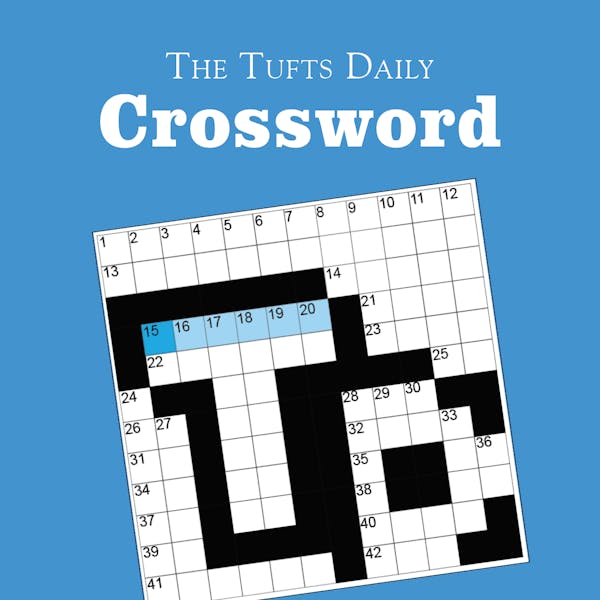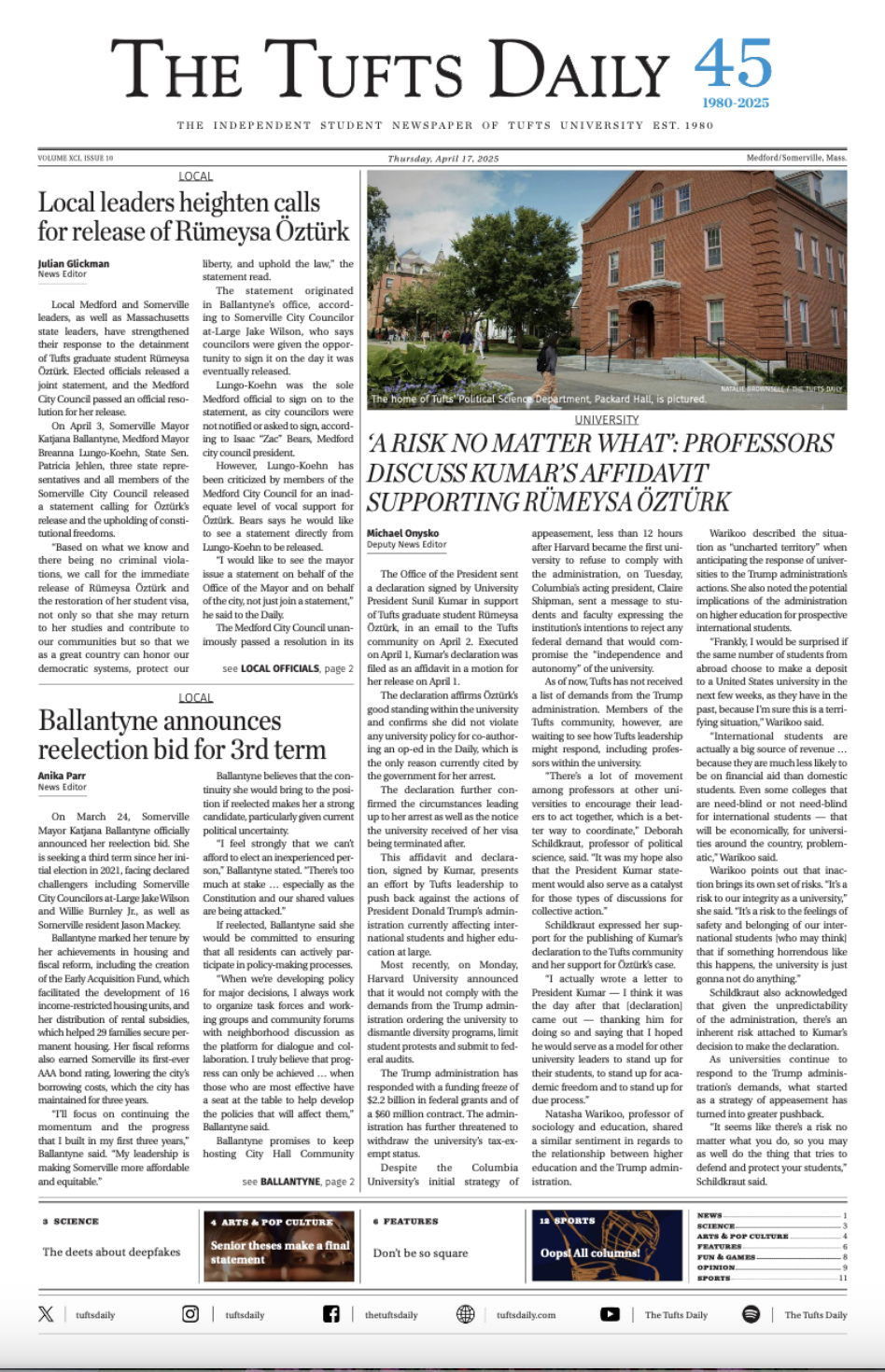Justin Vernon has long been a reluctant prophet of pain. Ever since his now-mythologized retreat to a Wisconsin cabin to record “For Emma, Forever Ago” in 2007, the Bon Iver frontman has stood at the center of a tension between raw emotional expression and the performance of that expression — between self-exploration and the expectation of sadness. But “SABLE, fABLE,” Bon Iver’s long-awaited fifth studio album, dares to ask a question few saw coming: What if Bon Iver, but happy?
Structured in two halves — “SABLE” and “fABLE” — the album moves from bleak introspection to jubilant rebirth with surgical precision. It opens with “SABLE,” an EP released in 2024, comprising three downcast, stripped-back tracks. These songs — “THINGS BEHIND THINGS BEHIND THINGS,” “S P E Y S I D E” and “AWARDS SEASON” — are familiar in tone, leaning into Vernon’s legacy of minimalist production, cryptic lyricism and plaintive falsetto. But even within this gloomy prelude, there is a quiet transformation brewing beneath the surface. “I would like the feeling gone,” he confesses early on. By the end of “AWARDS SEASON,” he owns both the pain and myth: “I’m a sable/ And honey, us the fable.”
That line is more than simply a poetic turn — it’s an inflection point. Vernon, once boxed into the role of indie’s chief melancholic, acknowledges the toll of perpetuating that narrative. He’s spoken about the physical and emotional exhaustion that accompanied years of performing emotional distress, even describing moments of onstage weeping that were met with ecstatic applause, as if fans were there to see him suffer. “SABLE, fABLE” is his answer to that cycle. It’s a pivot away from expectation and into something warmer.
Enter “fABLE,” where the entire palette shifts. Gone are the hushed acoustics and bruised metaphors — in their place, there is vibrant soft rock, bouncy choruses and sunlit synths. The album’s transition is marked by “Short Story,” which bridges the two halves with twinkling piano and Vernon’s breathy optimism: “Oh, the vibrance/ Sun in my eyes.” It’s a rebirth that feels hard-earned, not naive.
From there, Vernon dives headfirst into love, light and liberation. “Everything Is Peaceful Love” is a giddy, euphoric anthem, buoyed by Greg Leisz’s shimmering pedal steel and Rob Moose’s warm string arrangements. “And damn if I’m not climbing up a tree right now,” Vernon sings, leaning into childlike joy without irony. This is Bon Iver at his most emotionally direct and musically open.
But “fABLE” doesn’t stop at feel-good folk. It stretches genre boundaries further than any Bon Iver album before it. “Walk Home” toys the line of soft rock, driven by Jim-E Stack’s meditative drums, while “If Only I Could Wait,” featuring Danielle Haim, channels ’90s R&B and pop with sultry confidence. “From,” featuring Mk.gee, plays like a bright neon-lit love letter, complete with Vernon crooning, “Wanna kiss you ear from ear,” against a breezy, retro pulse.
This pivot isn’t without risk. For some fans, “SABLE, fABLE” may feel like a simplification — a shedding of the complex structures, glitchy textures and abstract lyricism that made albums like “22, A Million” so compelling. And it’s true: Many tracks from “fABLE” trade mystique for clarity and prioritize accessibility over innovation. Lines like “We can let the light come in” and “Just take my love in your time” feel slightly cliché. In a few moments — like “Short Story” and “Day One” — the record’s feel-good ethos risks veering into the overly saccharine or shallow.
Yet, in that very simplification lies Vernon’s boldest artistic statement to date. After years of distorting his voice and emotions into cryptic puzzle boxes, “SABLE, fABLE” is what happens when he simply speaks — and sings — his truth. And that truth is, at last, joyful.
The album’s spiritual core lies in tracks like “I’ll Be There,” where church organs, slinky basslines (courtesy of Prince collaborator MonoNeon) and Vernon’s falsetto converge into a hymn for romantic devotion: “You can have all my love for free/ And I will keep the fire in me.” Elsewhere, in “There’s a Rhythm,” Vernon contemplates leaving his Midwestern roots behind for a new life and love: “I’ve had one home that I’ve known/ And maybe it’s the time to go.” It’s equal parts goodbye and hello.
Even if some tracks on “fABLE” falter on repeat listens, the album’s cumulative effect is undeniable. It’s the sound of an artist no longer chasing ghosts — no longer bending under the weight of his origin story. Instead, he greets the sun with open arms, blending soulful, soft rock, R&B and ambient textures into something earnest and utterly human.
Bon Iver’s “SABLE, fABLE” is not just an album — it’s a reclamation. A reminder that beauty can live alongside heartbreak, that joy can be a radical act and that healing doesn’t have to mean forgetting the past — it can mean dancing with it, reshaping it and finally, singing it into the light.






